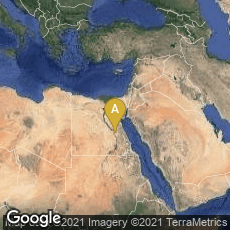

The Papyrus Graecus Holmiensis (Stockholm Greek Papyrus), a complete 15-leaf (39-page) papyrus codex written in Greek around 300 CE, contains 154 recipes for the manufacture of dyes and colors used in creating artificial stones. It is one of the earliest complete treatises on any technical or chemical subject, one of the earliest surviving complete papyrus codices on a secular subject, and a key record of the transmission of practical, technical information from the Hellenistic world to Byzantium.
The manuscript appears to have been written by the same scribe as a similar codex, Leyden papyrus X, preserved in the Rijksmuseum van Oudheden in Leiden, which also contains different recipes for the manufacture of materials.
"Sometime around 1828 a considerable number of papyri were recovered (presumably by grave robbers) from burial sites near Thebes in central Egypt, many of which were subsequently acquired by Johann d’Anastasy [Giovanni Anastasi] the Swedish-Norwegian Vice Council at Alexandria. These were not in the form of rolls written in ancient hieroglyphics but rather in the form of separate numbered sheets or codices written in Greek, indicating that the documents and burials were from the Greco-Roman period and probably dated from sometime around the late 3rd or early 4th century AD. The papyri in question were in remarkably good condition, due in part to their having been placed either in tightly sealed coffins or in sealed stone containers, and, in part, because they were, at the time of the original burials, brand new, having been especially copied for that purpose as so-called “Totenbeigaben” or death offerings intended to accompany and serve the deceased in the afterlife. The following year d’Anastasy sold 24 of these papyri to the Museum of Antiquities at the University of Leyden, and in 1832 he made a gift of the remaining items to the Swedish Royal Academy of Antiquities. . . .
" . . . neither papyrus contains the mystical symbolism and allegorical indirec- tion so typical of the true alchemical literature. Rather they consist largely of simple, short recipes. In the case of the Leyden papyrus these focus primarily on the preparation of various metal alloys – many of which are intended to imitate the appearance of either gold or silver – for use in making jewelry, in gilding, or in metallic writing, while a few others deal instead with dyes of various sorts. The contents of the Stockholm papyrus have the same form, but focus more on dyeing and the imitation of various precious stones and gems. Both papyri explicitly acknowledge that the alloys and gems which they describe are imitations and not the real thing. Indeed, so simple and safe are some of the recipes that they have actually been proposed as potential laboratory preparations for use in connection with a modern-day history of chemistry course" (The Leyden and Stockholm Papyri. Greco-Egyptian Chemical Documents from the Early 4th Century AD. An English Translation with Brief Notes by Earle Radcliffe Caley, Edited, with a New General Introduction, A Note on Techniques, and a Materials Index by William B. Jensen. Cincinatti, OH: University of Cincinnati, 2008, 3).
In November 2014 a digital facsimile was available from the World Digital Library at this link.
Caley, E. R. “The Stockholm Papyrus : An English Translation with brief notes” Journal of Chemical Education IV:8 (1927) 979-1002.
Lagercrantz, Otto. Papyrus Graecus Holmiensis, Uppsala: Almquist and Wiksells,1913. (Edition and German Translation)